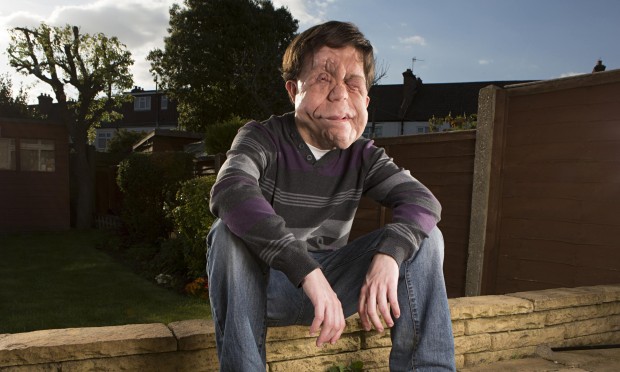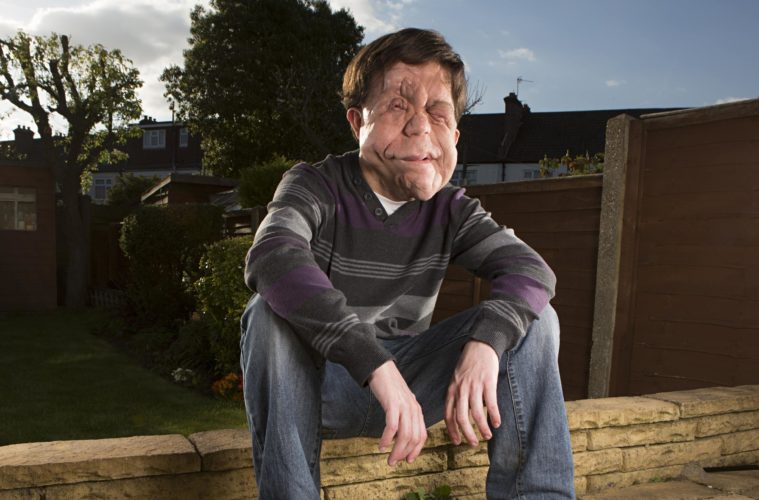
Dailies is a round-up of essential film writing and other highlights from our colleagues across the Internet — and, occasionally, our own writers. If you’d like to submit a piece for consideration, get in touch with us in the comments below or on Twitter at @TheFilmStage.
At The Guardian, Elizabeth Day interviews Adam Pearson, star of Under the Skin, who suffers from neurofibromatosis:
Adam Pearson is used to people noticing him. A few weeks ago, he was in a DVD shop near his home in Croydon, south London, and a gaggle of teenage girls starting talking loudly about him and taking photos of his face on their smartphones. “They were saying ‘Oh, look at that man’,” says Pearson. “And all I wanted to do was buy The Hobbit on Blu-Ray.”
Pearson suffers from neurofibromatosis, a condition that affects one in every 2,300 people and which causes non-cancerous tumours to grow on nerve tissue. In his case, the majority of these tumours are on his face although, he adds drily, “I’ve got one on my arse I probably won’t show you”. Throughout his 29 years, he has been bullied, harassed and called everything from Elephant Man to Scarface.
At Grantland, Alex Pappademas attempts to make sense of Nicolas Cage’s life and career, particularly the last, strange decade:
David Gordon Green’s new movie Joe, in theaters this weekend, is a bleakly funny rural noir about an ex-convict trying very hard to keep his rage in check. Because Joe is played by Nicolas Cage, you can imagine how well that goes. We believe in Joe’s struggle to maintain control because we’re also watching Cage keeping his Cageness holstered; we also know the explosion is inevitable, that life can pour only so much vinegar into Joe’s baking soda before science takes its course. But Green lets the story wander, pause, digress. A girl moves into Joe’s house, then moves out. A lost dog gives Joe and his teenage buddy — played by Mud’s Tye Sheridan, just about the only other recognizable actor in the cast — an excuse to get drunk during the day and practice their cool-guy faces. After I saw the movie at a film festival in March, I wrote that this sequence is the best intentionally comedic acting Cage has done since Adaptation back in 2002.
The Museum of the Moving Image have announced a Kenji Mizoguchi retrospective, featuring his 30 surviving films, all on celluloid. Watch Kaneto Shindô‘s 2.5-hour 1975 documentary on the director below.
Tom Shone ponders if film critics should care about cinematic technique at The Guardian:
Call it Auteurism 3.0: the belief that great films arise not from one man’s mastery but a three-way collision of souls, director, writer and star, all intent on an act of simultaneous autobiography. It’s true of On the Waterfront, and The Graduate and The 400 Blows. It’s true of The Godfather, and One Flew Over the Cuckoo’s Nest, of Taxi Driver and Raging Bull, of Eternal Sunshine of the Spotless Mind and There Will Be Blood and The Social Network. It’s also – and this should make even diehard formalists happy – what makes those films films, uniquely so. Creative collaboration breathes its own air, brings its own special suppleness, one which allows the audience to get under the skin of a character, into their heads, behind their eyes. So yes to discussions of technique, but can we remember what the technique is there for?
At The Dissolve, Keith Phipps, Tasha Robinson, and Scott Tobias track the eternal appeal of vampires on film:
I’m now on record as loving Jim Jarmusch’s Only Lovers Left Alive, in part because it Jarmuschifies the vampire-movie genre, which has been revived and revised so many times that it seems like a fresh take isn’t possible. What I appreciate about the film is Jarmusch’s disinterest in the florid emotions and mythos generally associated with vampires; he seems more compelled by the idea that these creatures have been on Earth much longer than ordinary human beings, and have developed habits and a kind of worldly wisdom that wouldn’t otherwise be possible. Jarmusch has a history of claiming genres for himself—the East-meets-West fusion of Ghost Dog: The Way Of The Samurai, the minimalist comedy and allusive poetry of his Western Dead Man—but few directors have such a singular talent. Even the great (or once-great, anyway) Dario Argento whiffed badly when he tried to mix horror classicism with modern effects in 2013’s laughable Dracula 3-D, and the entire Twilight series seems like a naïve, junior-varsity play on vampire themes that are meant to make its adolescent love story seem more “epic.”

